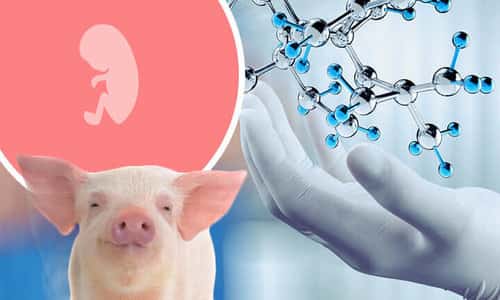

Longer term, the researchers hope to use the chimeras not only to study early human development and to model disease, but to develop new approaches for drug screening, as well as potentially generating transplantable cells, tissues, or organs.Īn accompanying Preview in Cell outlines potential ethical considerations surrounding the generation of human/non-human primate chimeras. "Understanding which pathways are involved in chimeric cell communication will allow us to possibly enhance this communication and increase the efficiency of chimerism in a host species that's more evolutionarily distant to humans."Īn important next step for this research is to evaluate in more detail all the molecular pathways that are involved in this interspecies communication, with the immediate goal of finding which pathways are vital to the developmental process. "From these analyses, several communication pathways that were either novel or strengthened in the chimeric cells were identified," Izpisua Belmonte explains. The investigators performed transcriptome analysis on both the human and monkey cells from the embryos. "Generation of a chimera between human and non-human primate, a species more closely related to humans along the evolutionary timeline than all previously used species, will allow us to gain better insight into whether there are evolutionarily imposed barriers to chimera generation and if there are any means by which we can overcome them." "Historically, the generation of human-animal chimeras has suffered from low efficiency and integration of human cells into the host species," Izpisua Belmonte says. Importantly, though, the percentage of human cells in the embryos remained high throughout the time they continued to grow. Survival soon began declining, and by day 19, only three chimeras were still alive. After 10 days, 103 of the chimeric embryos were still developing.

After one day, human cells were detected in 132 embryos.

The cells were from an induced pluripotent cell line known as extended pluripotent stem cells, which have the potential to contribute to both embryonic and extra-embryonic tissues. In the current study, six days after the monkey embryos had been created, each one was injected with 25 human cells. The advance that made the current study possible came last year when this study’s collaborating team-led by Weizhi Ji of Kunming University of Science and Technology in Yunnan, China-generated technology that allowed monkey embryos to stay alive and grow outside the body for an extended period of time. Interspecies chimeras in mammals have been made since the 1970s, when they were generated in rodents and used to study early developmental processes. "An important goal of experimental biology is the development of model systems that allow for the study of human diseases under in vivo conditions." "As we are unable to conduct certain types of experiments in humans, it is essential that we have better models to more accurately study and understand human biology and disease," says senior author Juan Carlos Izpisua Belmonte, a professor in the Gene Expression Laboratory at the Salk Institute for Biological Sciences. The work appears April 15 in the journal Cell. It also has implications for developing new models of human biology and disease. The research, despite its ethical concerns, has the potential to provide new insights into developmental biology and evolution. Investigators in China and the United States have injected human stem cells into primate embryos and were able to grow chimeric embryos for a significant period of time-up to 20 days. view moreĬredit: Weizhi Ji, Kunming University of Science and Technology I am a Palestinian Christian,” he said.Image: This image shows a chimera human-monkey blastocyst. In an interview in December, I asked Hanna what Jewish law had to say about human-animal mixtures. Scientists predict many other reports discussing human-animal chimeras soon. In 2013, Hanna’s lab at the Weizmann Institute of Science in Rehovot showed these naïve cells could contribute to the bodies of fetal mice, resulting in animals with as much as 15 percent human tissue. That changed when Belmonte’s lab and that of Israeli scientist Jacob Hanna each developed new ways of cultivating human stem cells to take on a more “naïve,” primitive state that is able to contribute to the animal embryo. Previously, any added human cells would simply die or the embryo would not live. National Institutes of Health, which in September instituted a ban on funding chimera research until it can weigh ethical questions associated with it.Īttempts to make this sort of human-animal chimera began only recently. In fact, the Vatican’s position on “human-animal chimeras,” as the mixtures are known, may be more liberal than that of the U.S. While the Catholic Church has opposed research on human embryos, it endorses evolution and generally takes a liberal view on scientific matters.


 0 kommentar(er)
0 kommentar(er)
